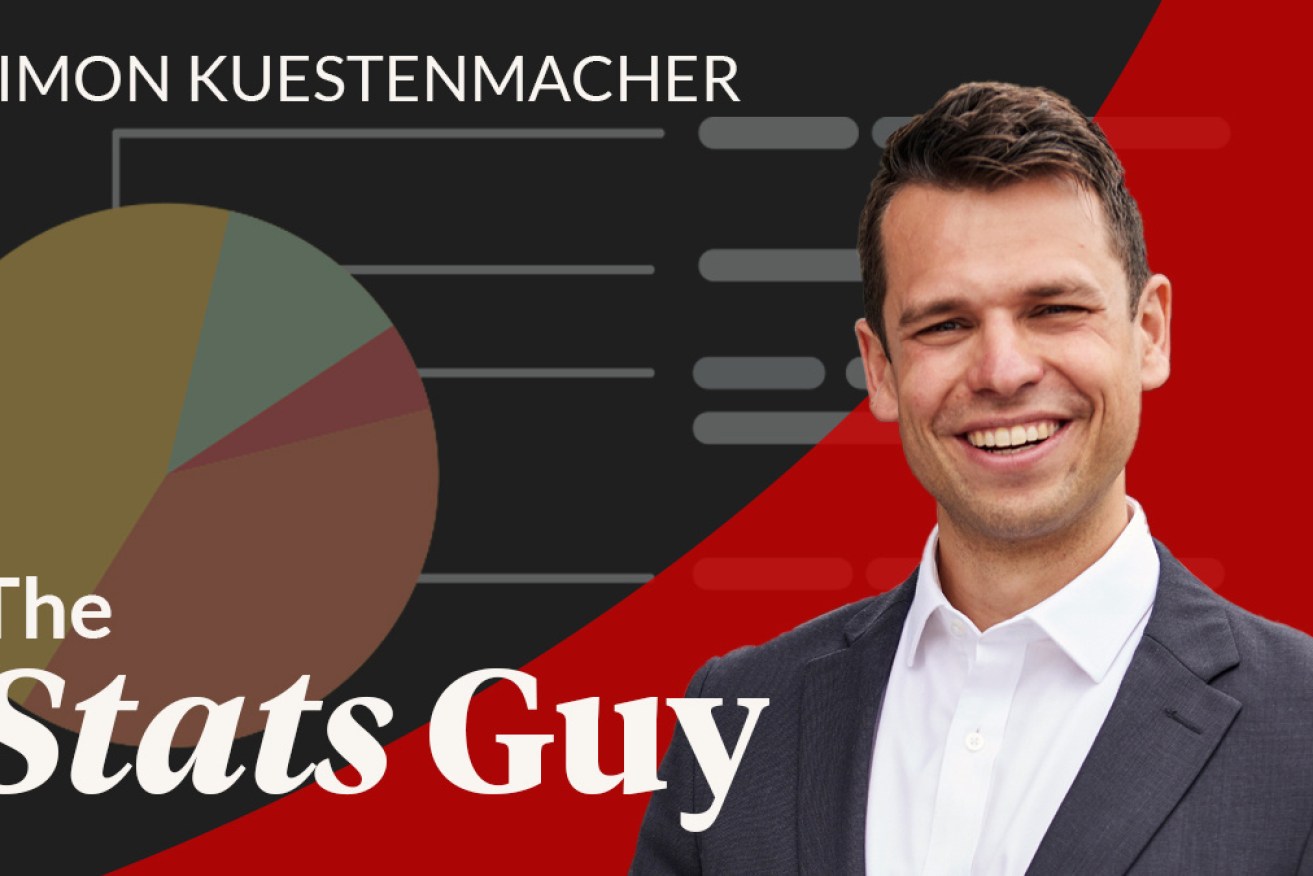The Stats Guy: An ugly truth about Australia is hiding in the latest earnings report


Hot new jobs and wages figures mask a deep rift in our economic system and workforce, explains Simon Kuestenmacher. Image: TND
Great news regarding average weekly earnings were published by the Australian Bureau of Statistics this week.
The average weekly earnings for adults working full-time rose to an all-time high of $1844. That’s 26 bucks more than last year. An extra parma and pot per week – what more can you ask for?
It gets even better, the unemployment rate in July 2021 fell to a laughably low 4.6 per cent and 13.2 million Aussies were employed. That means a million more people held a job than in May 2020.
It would be great to end the column here, but we will have to dive a bit deeper into the earnings and job data to understand what’s really going on. Don’t worry, this won’t turn into a gruesome horror story, but we will need to add nuance to the narrative.
The rise of part-time employment is a mixed blessing
Let’s start with the record high earnings. Annualised, a weekly income of $1844 would earn you just under $96,000. That sounds nice and high, but we must remember that a full third of the workforce is only employed part-time. In the late 1970s part-time employment was rare and only 15 per cent of jobs were so classified.
The rise of part-time employment over the last four decades is a mixed blessing.
It’s great that more people can work in flexible arrangements. Mothers in particular are likely to take on part-time positions (the fact that most households have to rely on two income earners these days is a topic for another column).
Studying and working at the same time? Great, part-time work (this includes the gig-economy) makes it possible.
The problem is, many part-time workers would prefer the higher income and improved job security that typically comes with full-time employment.
Earnings figures can be deceptive
In a population with a high share of part-time workers, earning figures for full-time workers don’t tell the full story.
While Australia grew the workforce in absolute terms (which is great), we changed its composition in a way that made the average earning figures less meaningful.
Since the start of the pandemic, we grew the workforce by 3.2 per cent (again, yay!). We lost low-income jobs (skill levels four and five) and added heaps of high-income jobs (skill level one).
This shift in composition alone drives up average earnings. Our workforce is increasingly split into high-incomers and low-income earners, while the middle slowly erodes away.
In such a U-shaped workforce averages or medians don’t tell us much of the struggling cohorts.
They do however suggest that the workers classified as under-employed and those whose working hours got reduced during the pandemic can be found among the low-income group rather than among the high-income one.
Even though there are more than twice as many full-time workers (9 million) than part-time workers (4.1 million), the ABS Labour Force data shows that there are almost 90,000 more part-time workers that saw their working hours reduced because there was no or not enough work available.
When you are full-time employed by the government or a big corporation and you have less work to do, you work shorter hours and can spend more time with your family, pet, or hobbies while your income stays the same.
Part-time workers take pandemic hit
Many part-time employees that see their hours shortened just see their income eroding. This financial stress adds to the general COVID-induced existential dread.
We know that lower-income workers are more likely to work part-time, to be unable to work from home, to be exposed to COVID, to have their hours reduced during lockdowns, to lose their jobs during lockdowns, to experience financial stress during lockdowns.
The pandemic and all its consequences weigh heavier on the low-income workers (skill levels 4 and 5) than on highly-skilled knowledge workers and government employees.
I promised you that this column wasn’t going to turn into a gruesome horror story. I don’t think it did, but it certainly turned into a sobering tale.
High average income for the fully employed, very low unemployment figures suggest a country that is doing well and is sharing its riches across the population.
In reality, these figures only mask a deep rift that is underlying our economic system and workforce.
To create an Australia that embodies what the shiny employment figures suggest, we want to get as many people as possible into full-time employment, raise wages for everyone (especially the low-income earners) and shift low-income workers into middle-income employment by strengthening the construction and manufacturing sectors.
Now that sounds like a story worth telling.








